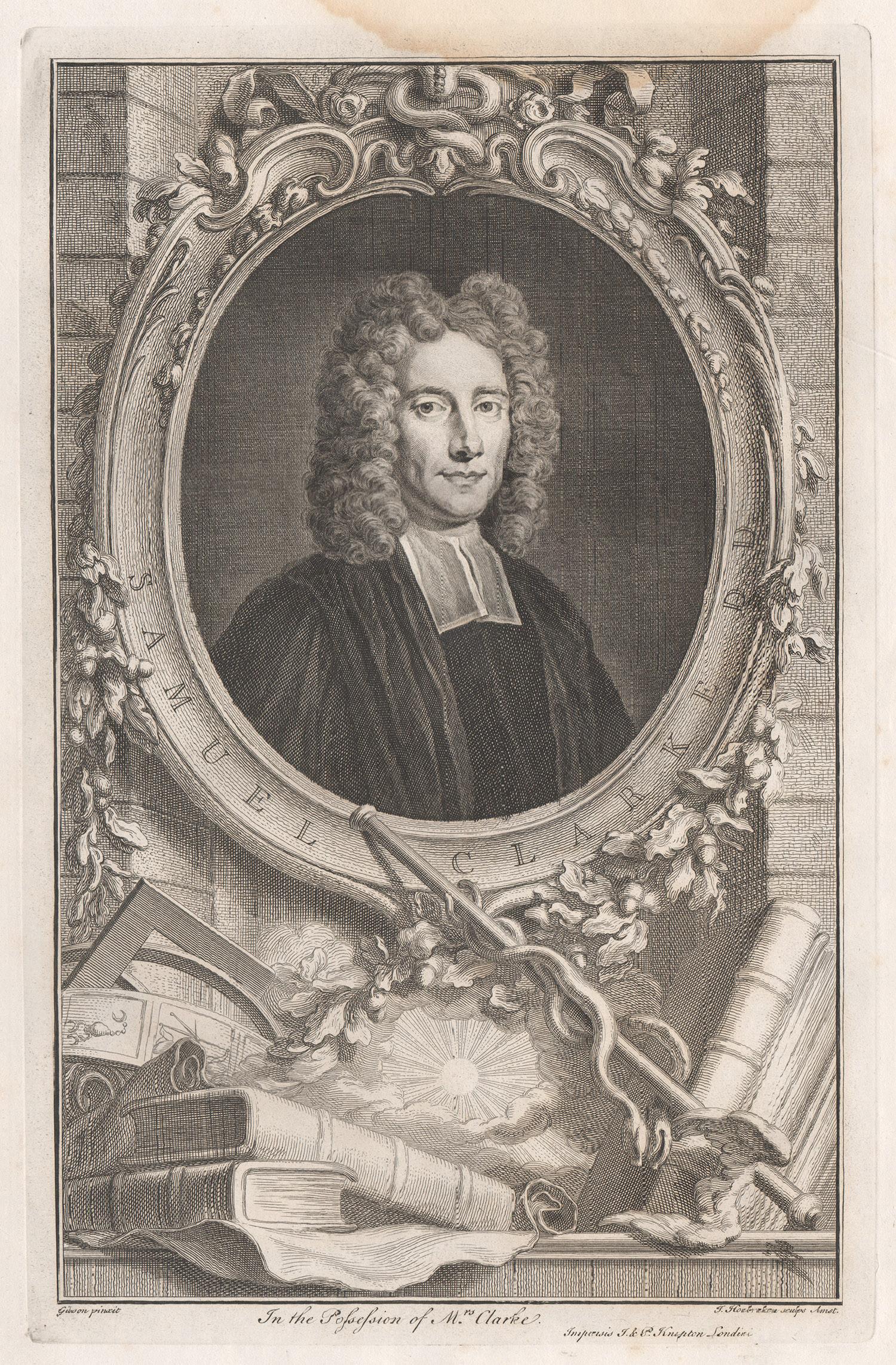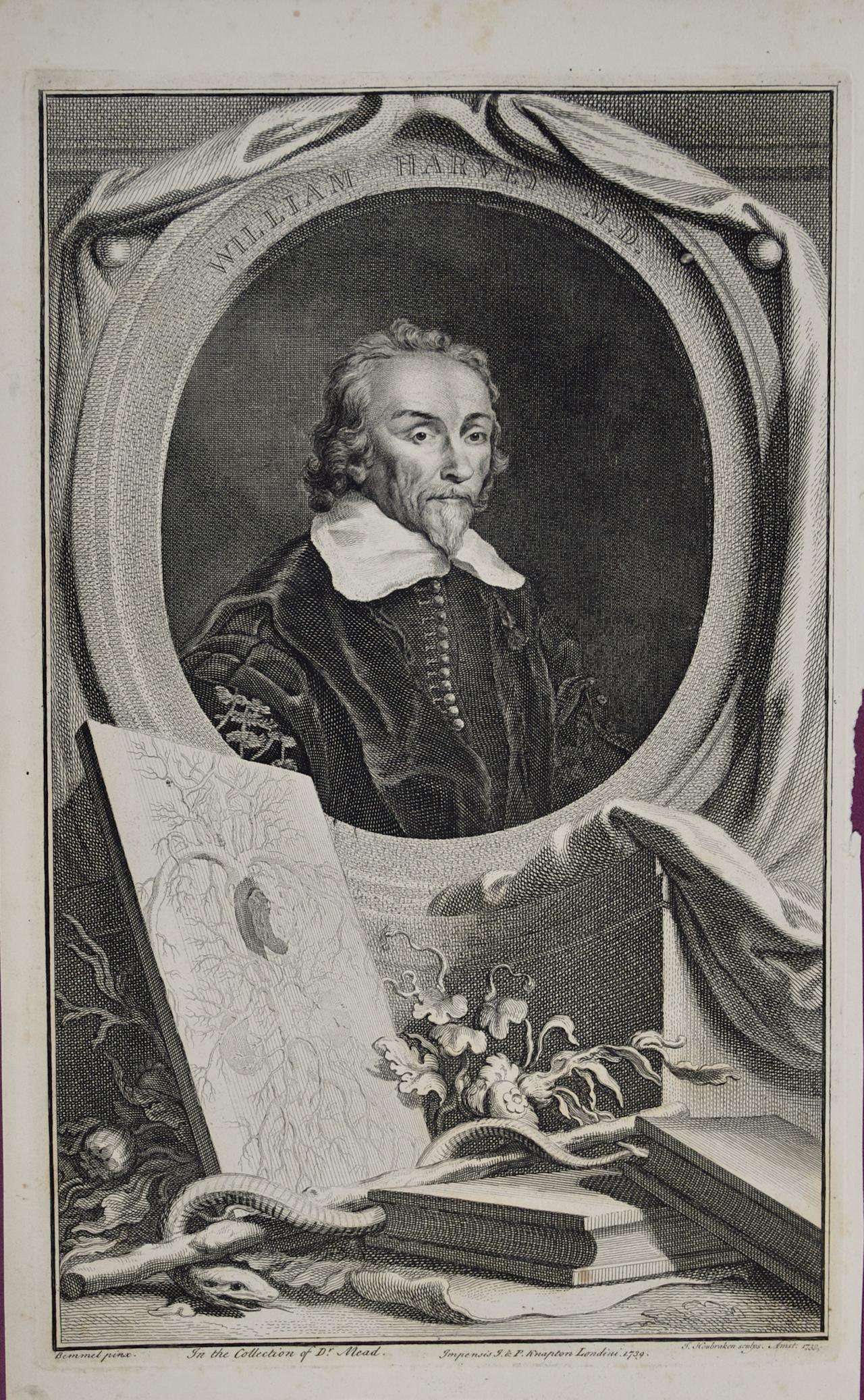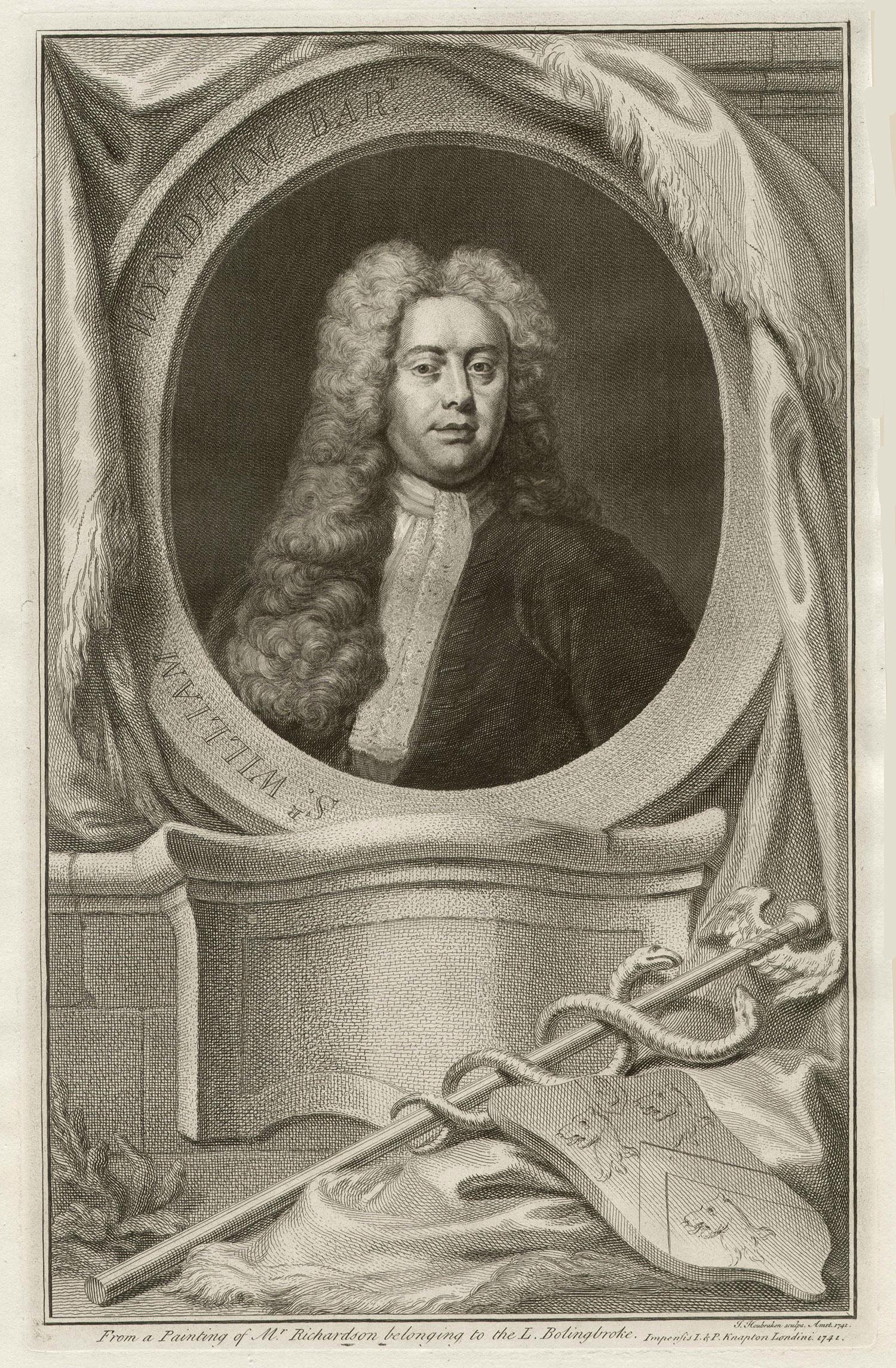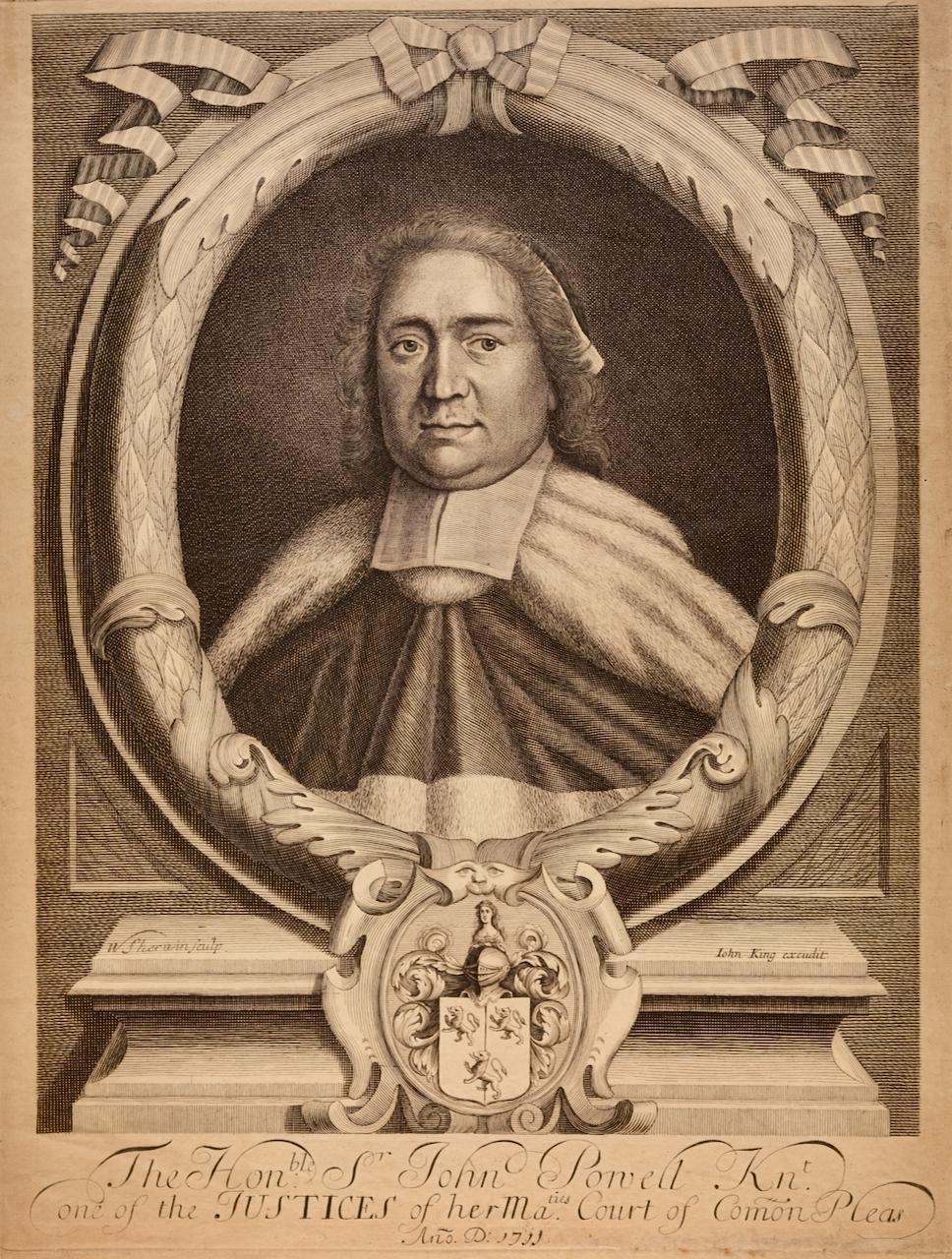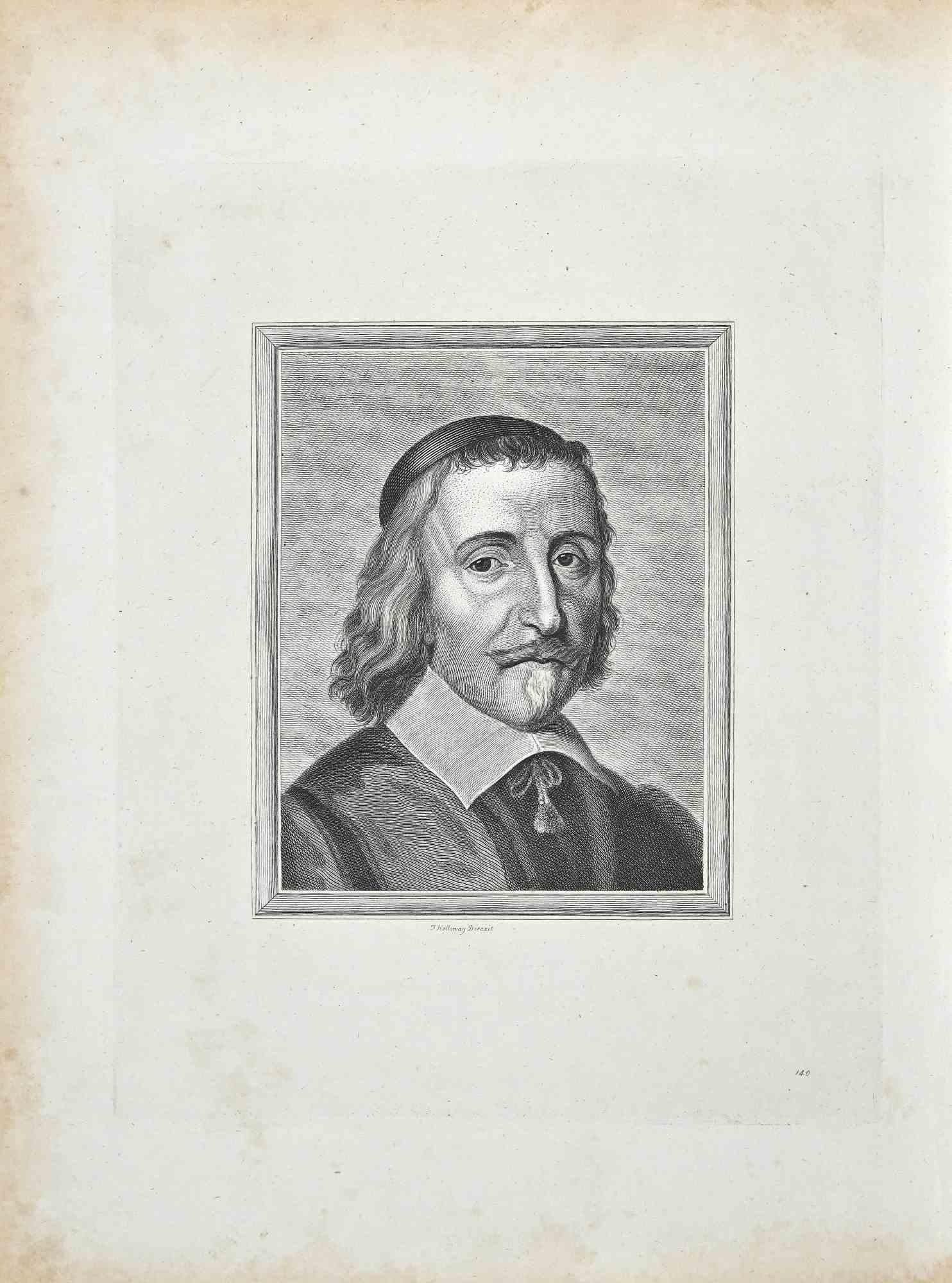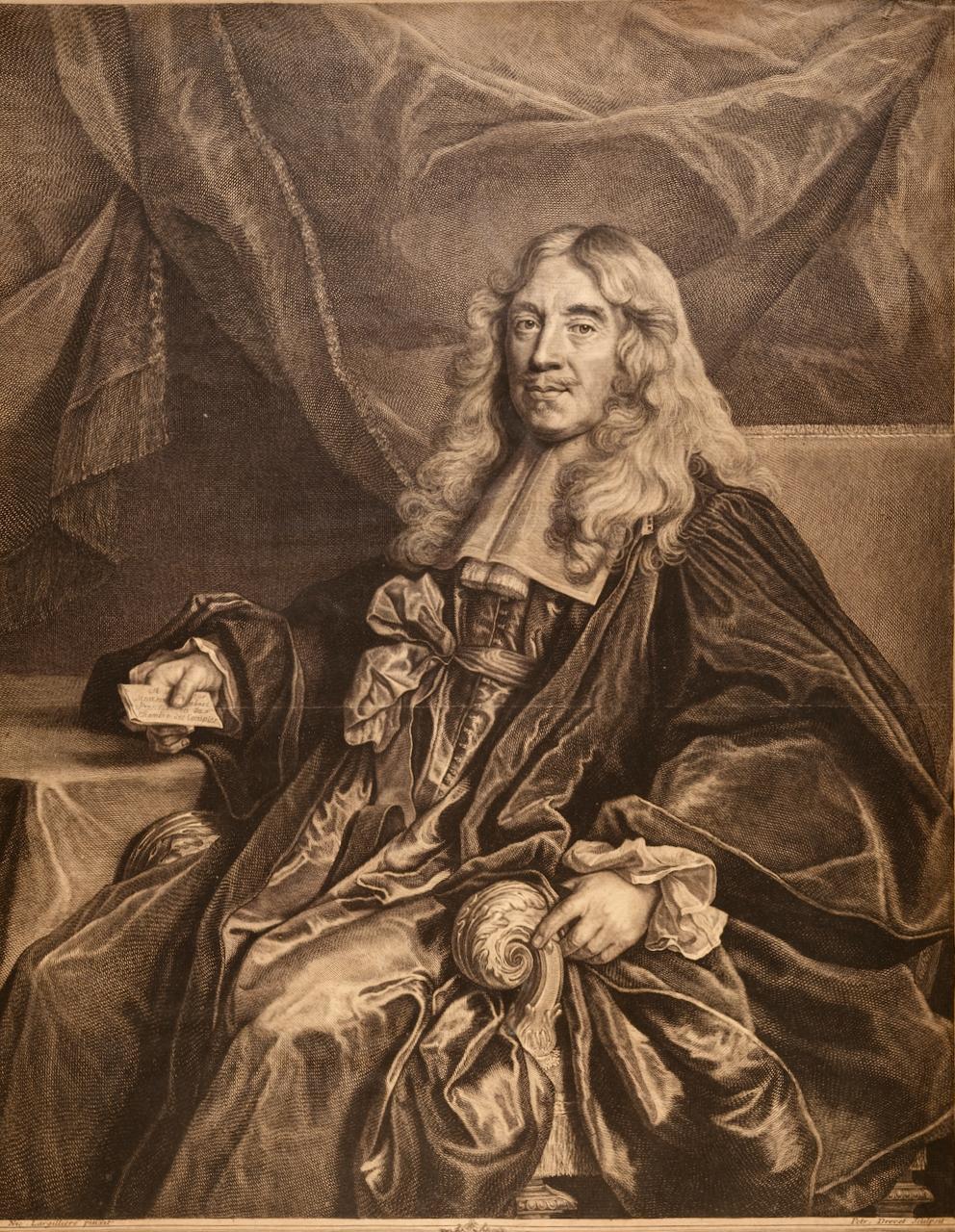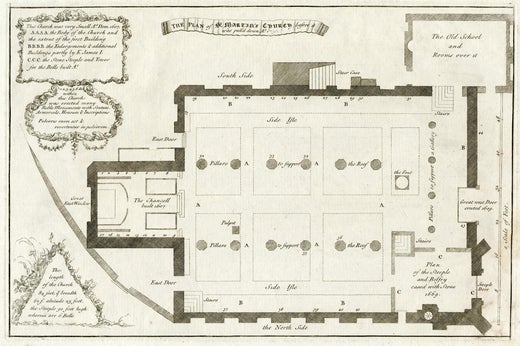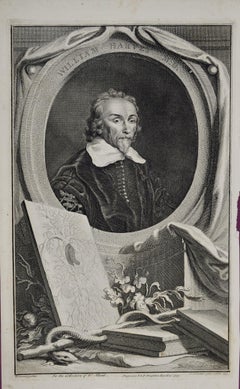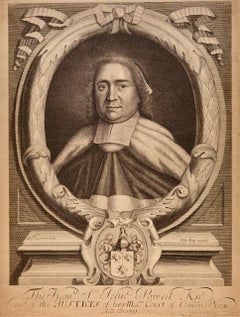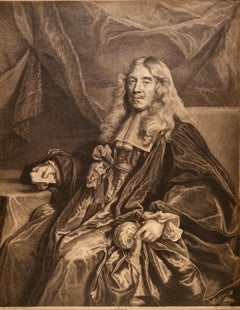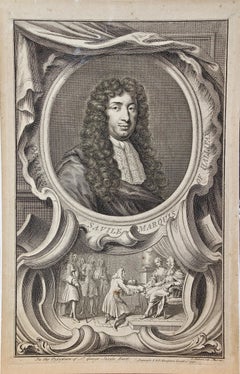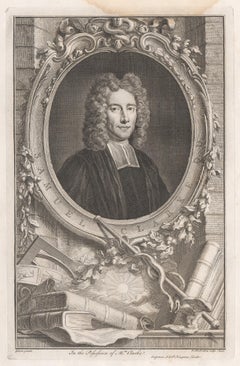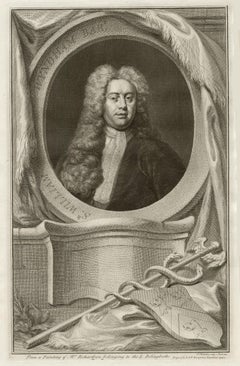Items Similar to Thomas Willis, MD, 17th C. Pioneer of Neurology & Psychiatry: 18th C. Portrait
Want more images or videos?
Request additional images or videos from the seller
1 of 10
George VertueThomas Willis, MD, 17th C. Pioneer of Neurology & Psychiatry: 18th C. Portrait1742
1742
$540
$67520% Off
£416.27
£520.3420% Off
€473.15
€591.4320% Off
CA$769.42
CA$961.7820% Off
A$837.05
A$1,046.3120% Off
CHF 441.70
CHF 552.1220% Off
MX$10,066.97
MX$12,583.7220% Off
NOK 5,571.86
NOK 6,964.8220% Off
SEK 5,185.50
SEK 6,481.8720% Off
DKK 3,533.64
DKK 4,417.0520% Off
About the Item
This is an 18th century copperplate engraved portrait of the 17th century physician and scientist Thomas Willis, MD from "The Heads of Illustrious Persons of Great Britain", engraved by Jacobus Houbraken and George Vertue and published by John & Paul Knapton in London in 1742. The portrait of Willis is within an ornate oval topped by dramatic feathered wings and a staff of Asclepius with one snake enticed around it. Flanking the lower portion of the oval are a skull, spine and ribs, bottles containing liquids, manuscripts and quills for writing, books and a coat of arms.
Thomas Willis, MD (1621-1675) was an English doctor and anatomist, who played an important part in the history of anatomy, neurology and psychiatry. He was a founding member of the Royal Society. Willis was a pioneer in research into the anatomy of the brain, nervous system and muscles. His most notable discovery was the "Circle of Willis" (named after him), which is a circle of connected arteries at the base of the brain. It receives blood from the heart via the cerebral arteries and gives off major arterial branches which supply blood to the brain. Willis was the first to number the cranial nerves at the base of the skull in the order still in use today. His major publication "Cerebri Anatome" was published in 1664. In it he coined the term neurology. The great English architect Sir Christopher Wren provided drawings, as did Thomas Millington, and the anatomist Richard Lower. In 1667 Willis published "Pathologicae cerebri, et nervosi generis specimen", an important work on the pathology and neurophysiology of the brain. In it he developed a new theory of the cause of epilepsy and other convulsive diseases, and contributed to the development of psychiatry. In 1672 Willis published the earliest English work on medical psychology. He also promoted a new theory of the cause of epilepsy and other convulsive diseases and he contributed to the development of the field of psychiatry.
This beautiful engraved portrait measures 15.88" in height by 10" in width. It has very wide margins. There is faint spotting in the margins, but the print is otherwise in excellent condition.
George Vertue (1684-1756) was an English engraver, artist and publisher, as well as a researcher on the history of British art. He was a member of the Academy of Painting, as well as the Society of Antiquaries. He created around five hundred portraits and a similar number of published plates were devoted to antiquarian subjects.
Jacobus Houbraken (1698-1780) was a Dutch engraver who devoted himself almost entirely to portraiture. He produced a published record of the lives of artists from the Dutch Golden Age. In many cases his portraits are the only likenesses left of these people. Houbraken He collaborated with the historian Thomas Birch and artist George Vertue, on the project entitled, "Heads of Illustrious Persons of Great Britain", published in parts in London from 1743 to 1752. From 1752 to 1759 he worked with the historian Jan Wagenaar (1709–1773) on his 21 part "Vaderlandsche Historie", published by Isaac Tirion in Amsterdam.
- Creator:
- Creation Year:1742
- Dimensions:Height: 15.88 in (40.34 cm)Width: 10 in (25.4 cm)
- Medium:
- Period:1740-1749
- Framing:Framing Options Available
- Condition:
- Gallery Location:Alamo, CA
- Reference Number:Seller: # 9331stDibs: LU117328756702
George Vertue
George Vertue (1684-1756) was an English engraver, artist and publisher, as well as a researcher on the history of British art. He was a member of the Academy of Painting, as well as the Society of Antiquaries. He created around five hundred portraits and a similar number of published plates were devoted to antiquarian subjects. Jacobus Houbraken (1698-1780) was a Dutch engraver who devoted himself almost entirely to portraiture. He produced a published record of the lives of artists from the Dutch Golden Age. In many cases his portraits are the only likenesses left of these people. Houbraken He collaborated with the historian Thomas Birch and artist George Vertue, on the project entitled, "Heads of Illustrious Persons of Great Britain", published in parts in London from 1743 to 1752. From 1752 to 1759 he worked with the historian Jan Wagenaar (1709–1773) on his 21 part "Vaderlandsche Historie", published by Isaac Tirion in Amsterdam.
About the Seller
5.0
Platinum Seller
Premium sellers with a 4.7+ rating and 24-hour response times
Established in 2011
1stDibs seller since 2019
298 sales on 1stDibs
Typical response time: 1 hour
- ShippingRetrieving quote...Shipping from: Alamo, CA
- Return Policy
More From This Seller
View All18th C. Portrait of William Harvey, MD: 17th C. Circulatory System Discoveries
By Jacobus Houbraken
Located in Alamo, CA
An 18th century engraved portrait of William Harvey, MD by Jacobus Houbraken after a painting by Wilhem von Bemmel, from "The Heads of Illustrious Pers...
Category
1730s Portrait Prints
Materials
Engraving
Sir. John Powell, Knight: Early 18th C. Engraved Portrait After William Sherwin
Located in Alamo, CA
This is an early 18th century portrait of Sir John Powell entitled "The Honorable Sr. John Powell, Knight. one of the Justices of her Majesties' Court of Common Pleas. Ano. D 1711". It was engraved and published by John King in London in 1711, after an earlier work by William Sherwin. The engraving depicts a bust length portrait of Powell wearing an elaborate fir-trimmed robe and collar. The portrait is encompassed in an ornate oval frame, sitting on a pedestal with an impressive coat-of-arms below.
This engraved portrait is printed on laid, chain-linked watermarked cream-colored paper The sheet measures 15.25" high and 11.38" wide. It is adhered to an archival thick card at the upper corners, There is a 1/8" tear at the lower edge of the sheet, but the print is otherwise in very good condition. This engraving is held by museums and institutions, including the British Museum and the Harvard University Art Museum.
Sir John Powell (1632-1696) was an English lawyer and judge who served as a justice of the King's Bench from 1683 until his death. He was born in Glamorganshire, Wales, and studied at Jesus College, Oxford, before being called to the bar at the Middle Temple in 1656. Powell was known for his staunch support of the monarchy and the Church of England, and he played a prominent role in the trial of the Whig leader Lord William Russell in 1683, which resulted in Russell's execution for his alleged involvement in a plot to assassinate King Charles II. Powell was also involved in the trials of several other prominent Whig politicians, including Algernon Sidney and Titus Oates. In addition to his work as a judge, Powell was also a member of Parliament for various constituencies throughout his career, and he served as Solicitor General and Attorney General for Wales under King James II. However, he opposed James's efforts to promote Catholicism and supported the Glorious Revolution of 1688, which led to James's overthrow and the installation of William and Mary as joint monarchs.
Powell was known for his intellectual rigor and his legal expertise, and he authored several influential legal treatises during his lifetime. He was widely respected by his peers and by the legal community as a whole, and his legacy as a jurist and judge continues to be celebrated today.
William Sherwin (1645-1709) was an English engraver who worked during the late 17th and early 18th centuries. He was born in Chesterfield, Derbyshire, and is known for his high-quality engravings of various subjects, including portraits, landscapes, and architectural views. Sherwin was trained as an engraver and worked as an apprentice to the renowned engraver Robert White. After completing his training, he went on to establish his own studio in London, where he produced a significant body of work over the course of his career. One of Sherwin's most famous works is his engraving of the portrait of John Locke...
Category
Early 18th Century Old Masters Portrait Prints
Materials
Engraving
$620 Sale Price
20% Off
N. Lambert Seigneur de Thorigny: 17th C. Engraved Portrait After Largillière
By Nicolas de Largillière
Located in Alamo, CA
This is a 17th century engraving entitled "Messire Nicolas Lambert Seigneur de Thorigny, Conseiller du Roy" by Pierre Drevet after a painting by Noicolas de Largillière, published in Paris in 1698. This portrait depicts a three-quarter length view of Nicolas Lambert de Thorigny, who is dressed in elaborate robes and collar of a wealthy Parisian nobleman of the time. He is seated directed to the left and looking directly at the viewer. He is holding an inscribed note in his right hand. A magnificent billowing curtain is in the background. Lambert's coat of arms is shown in the center of the lower inscription area. In the inscription area is lettered with title, production detail: "Nic. Largilliere pinxit" and "Petr. Drevet sculpsit", and publication detail: "Se vend a Paris chez Drevet rüe du Foin au coin du College de Maître Gervais".
Nicolas Lambert, Seigneur de Thorigny (1600-1664), was a French nobleman and military commander who lived in the 17th century. He served in the French army during the Thirty Years' War, a conflict that took place from 1618 to 1648 and involved many European powers. Lambert fought in several battles during the war and rose to the rank of colonel. After the war, Lambert returned to France and became involved in politics. He served as a member of the Estates General, a legislative body that advised the king, and as a governor of several provinces. He was a counsellor and confidant of King Louis XIV. He had the title of Président de la Chambre des Comptes. He also became a member of the French Academy of Sciences, a prestigious institution that promotes scientific research and scholarship. Lambert was known for his military expertise, his intelligence, and his commitment to public service. He iInherited the Hôtel Lambert in Paris from his brother Jean Baptiste in 1644 and hired some of the most prominent artists of the time, including Charles Le Brun to decorate and furnish the building.
This beautiful old master engraving was created with impressive detailed technique. It is printed on laid, chain-linked paper. The sheet measures 18.5" high and 13.38" wide. The sheet is adhered to an archival backing paper at the top. There is a faint horizontal center fold and mild discoloration in the inscription area and in the upper margin on the right, with mild wrinkling here. The print is otherwise in very good condition, considering its age. This engraving is so rare, that no comparable prints could be identified for sale online. It is currently only listed in museum collections, including: The Metropolitan Museum of Art, The British Museum, The Louvre, The Riksmuseum, The Victoria & Albert Museum, The Fitzwilliam Museum at the U. of Cambridge, The Boston Museum of Fine Arts, Harvard Art Museums, The Finnish National Museum, The Philadelphia Museum. It is shown in the Metropolitan Museum's Cataloque of French paintings entitled: "French Paintings in The Metropolitan Museum of Art, published in 2018, page 36. The page is included in the photos.
Nicolas de Largillière (1656-1746) was a French portrait painter who achieved great success and acclaim during the late Baroque and Rococo periods. He was born in Paris and trained under the painter Antoine Goubeau. He studied in Antwerp and London before returning to France. While in England he was a favorite painter of King Charles II and King James II of England...
Category
Late 17th Century Portrait Prints
Materials
Engraving
$5,580 Sale Price
20% Off
18th Century Engraved Portrait of George Savile, Marquis of Halifax by Houbraken
By Jacobus Houbraken 1
Located in Alamo, CA
A superb 18th century engraved portrait of George Savile, Marquis of Halifax, Plate 82 in "The Heads of Illustrious Persons of Great Britain", written by...
Category
Mid-18th Century Realist Portrait Prints
Materials
Laid Paper, Engraving
Johannes Wesselius Portrait: An 18th Century Engraving/Etching by Houbraken
By Jacobus Houbraken
Located in Alamo, CA
This is an 18th century engraved and etched portrait of Johannes Wesselius by Jacobus Houbraken after a painting by Jan Maurits Quinkhard. It depicts a half-height image of Wesselius...
Category
Mid-18th Century Old Masters Portrait Prints
Materials
Engraving, Etching
Richard Reynolds, Society of Friends: 19th C. Engraved Portrait by Wm. Sharp
By William Sharp
Located in Alamo, CA
This is an early 19th century engraved portrait of the industrialist and philanthropist Richard Reynolds by William Sharp after William Hobday. It was published in London by Rudolph Ackerman in 1817. The print is entitled "Richard Reynolds of the Society of Friends, Late of Bristol". This three-quarter length portrait of Reynolds depicts him seated, directed to right, looking towards the viewer. He is holding an open book, wearing a plain suit. A curtain in the background is pulled to the left, revealing bookshelves. Some of the books are labelled 'Addison & Watts' 'Kempis & Fenelon' 'Milton & Cowley' etc. The inscription above the portrait reads: "When the eye saw him it blessed him". The lettering below the image reads: "Richard Reynolds of the Society of Friends, Late of Bristol; Whose Life and Fortune were devoted to the Glory of God by relieving the humble in Distress.', This plate is dedicated by Permission to his Royal Highness, the Prince Regent by his most devoted very humble servant William Hobday."
This engraving is printed on thick paper. The sheet measures 16" high and 12" wide. It is adhered to an archival backing in the upper left corner. There is mild discoloration and toning in the margins, but it does not involve the image.
Richard Reynolds (1735-1816) was a prominent member of the Society of Friends, also known as Quakers, in the 18th and 19th centuries. He was born into a wealthy family in Bristol, England, and inherited a successful copper smelting, iron manufacturing business from his father. Despite his privileged upbringing, Reynolds was known for his deep concern for the poor and his commitment to social justice. He used his wealth and influence to support a range of philanthropic causes, including the abolition of slavery, the improvement of working conditions for miners and factory workers, and the provision of education for the poor. Reynolds was also a prominent supporter of the Quaker...
Category
Early 19th Century Portrait Prints
Materials
Engraving
You May Also Like
Samuel Clarke DD, portrait engraving, c1820
By Jacobus Houbraken 1
Located in Melbourne, Victoria
Copper-line engraving by Jacobus Houbraken (1698-1780) after the painting by Gibson.
Houbraken was a Dutch engraver famous for his series of portraits of famous English historical f...
Category
Early 19th Century Renaissance Portrait Prints
Materials
Engraving
Sir William Wyndham, portrait engraving, c1820
By Jacobus Houbraken 1
Located in Melbourne, Victoria
Copper-line engraving by Jacobus Houbraken (1698-1780).
Houbraken was a Dutch engraver famous for his series of portraits of famous English historical figures with elaborate cartouc...
Category
Early 19th Century Renaissance Portrait Prints
Materials
Engraving
Portrait of Man - Original Etching by Thomas Holloway - 1810
By Thomas Holloway
Located in Roma, IT
Portrait of Man is an original etching artwork realized by Thomas Holloway for Johann Caspar Lavater's "Essays on Physiognomy, Designed to Promote the Knowledge and the Love of Manki...
Category
1810s Modern Figurative Prints
Materials
Etching
Henry Bennet Earl of Arlington, English Civil War, portrait engraving, c1820
By Jacobus Houbraken 1
Located in Melbourne, Victoria
Copper-line engraving by Jacobus Houbraken (1698-1780) after Peter Lely.
Houbraken was a Dutch engraver famous for his series of portraits of famous English historical figures with elaborate cartouches.
Originally published 1739, this impression c1820.
360mm by 230mm (platemark)
Henry Bennet, 1st earl of Arlington, 1618-85, was an English statesman who fought for the royalists in the English civil war...
Category
Early 19th Century Renaissance Portrait Prints
Materials
Engraving
Portrait of a Man - Original Etching by Thomas Holloway - 1810
By Thomas Holloway
Located in Roma, IT
Portrait of a man is an original artwork realized by Thomas Holloway for Johann Caspar Lavater's "Essays on Physiognomy, Designed to promote the Knowledge and the Love of Mankind",...
Category
1810s Old Masters Figurative Prints
Materials
Etching
The Portrait - The Physiognomy- Original Etching by Thomas Holloway - 1810
By Thomas Holloway
Located in Roma, IT
The Portrait - The Physiognomy is an original etching artwork realized by Thomas Holloway for Johann Caspar Lavater's "Essays on Physiognomy, Designed to Promote the Knowledge and th...
Category
1810s Modern Figurative Prints
Materials
Etching
More Ways To Browse
Sir Christopher Wren
Cape Town Paintings
Cheetah Oil Painting
Crop Circles
Dali Desert
Erte Poster
Female Art Deco Nude Corne Akkers
George Burns
Goodall Frederick
Grant Wood Paintings
H Meyer
Hand Tinted Photograph
Horse Pencil Sketches
Industrial Art Photos
Jack Russell Terrier Oil Painting
Jack Wilson
James Douglas
Jean Hill
